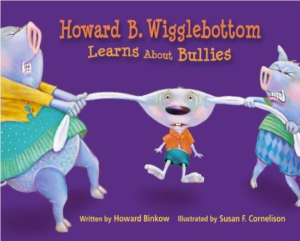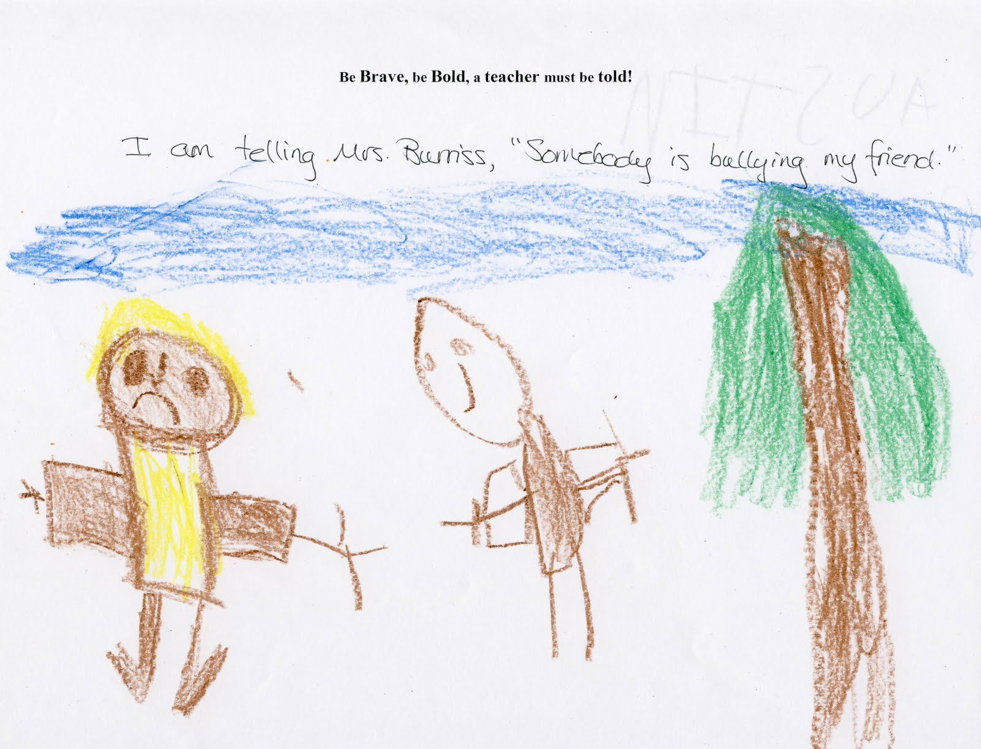 In my previous post, I outlined how I used a comprehensive counseling approach to address a first grade bullying situation through classroom teaching, small groups, and individual counseling. (Read about it here.) In this and upcoming posts, I’ll share the lessons from the new first grade bullying unit I developed. (Related ASCA standards are listed at the end of this post.) The objective for the bullying unit was:
In my previous post, I outlined how I used a comprehensive counseling approach to address a first grade bullying situation through classroom teaching, small groups, and individual counseling. (Read about it here.) In this and upcoming posts, I’ll share the lessons from the new first grade bullying unit I developed. (Related ASCA standards are listed at the end of this post.) The objective for the bullying unit was:
When students experience or witness bullying they will be able to:
- differentiate between mean and bullying behaviors.
- recognize that bullying should be reported to school staff.
- use a script to report bullying to school staff.
- tell another school staff member if the first adult does not believe or understand the report.
I had thought carefully about how to define bullying in a way that would be meaningful and comprehensible to first graders, and that would provide a foundation for, and mesh with, the definitions and language we use to talk about bullying in later grades. (See Spiraling Bullying Prevention.) Here is the definition I came up with:
A situation is bullying when:
- mean behavior happens over and over, or
- a group is being mean to an individual, or
- it involves a threat
Here is the outline for the first lesson:
1. Ask students, “What is bullying?” This will give you a sense of how close their current concept of bullying is to the definition you are going to work with. This also gives you information to use when assessing their learning at the conclusion of the unit.
- When I taught this lesson this year, 25 of 38 students gave responses, most of which were examples of physical, mean, and bossy behaviors. Five answers were stereotypical, probably media-influenced conceptions (locker-shoving, lunch-stealing, etc.) that were probably outside of their experience. Two students described repeated mean behaviors and two described ganging up, two of the three definitions of bullying that I planned to teach.
2. Explain to them that bullying is different than being mean. Both are unfriendly, and neither one is nice or feels good, but when someone is being mean you can usually handle it yourself by asking the person to stop, telling them how you feel, or walking away. Bullying is bigger than meanness and you always have to tell a grown-up. Kids can’t handle bullying by themselves!
- It is important to clearly differentiate between mean and bullying behavior, because if you don’t, kids are likely to: (1) fail to report bullying, or (2) tell an adult about everything, and stop using the strategies they already know how to use to handle conflicts and isolated mean behaviors. Failing to make the distinction between mean and bullying will undermine their ability to solve their own problems and drive you crazy. Speaking from experience here — I made this mistake my first year as a school counselor, when fourth graders practically wore a groove into the hallway to my door to report what wasn’t actually bullying!
3. Give the 3-part definition of bullying, holding up one finger for each type. Have the students do the same thing with their fingers.
4. Reiterate: Bullying is dangerous — You ALWAYS have to tell a teacher!
5. Read Howard B. Wigglebottom Learns About Bullying by Howard Binklow.
- For each situation ask: How can you tell that it is bullying? Will Howard’s strategy work?
- Whenever the refrain comes up, recite together: Be Brave, Be Bold, A Teacher Must Be Told!
- Ask: How did Howard solve the bullying problem? (Told his teacher).
6. Listen to the “Be Brave, Be Bold” rap from the We Do Listen Foundation website. Rap along when possible.
- Some of it is quite fast, but kids should be able to pick up on the refrain and rap along. I have the kids “finger dance” holding up three fingers on each hand and bopping them around. This helps reinforce that there are three ways to tell if a situation is bullying, and helps them have the opportunity to move without completely losing all focus on the lesson. This song is seriously FUN! I offer a dance party at the end of the class if there’s time, or build it into the end of the unit. (Note: Kids up through fifth grade love this rap, even when they’re too old for the book. (Check out other great resources to use with all of the Howard B. Wigglebottom books at http://wedolisten.org/)
7. Have students draw a picture of themselves telling a teacher about bullying. Use paper you have already captioned “Be Brave, Be Bold, a Teacher Must Be Told.”
Now, just TRY to get that rap out of your head! Sorry, I’ve got no tips on how to accomplish that!
Here are the ASCA National Standards that relate to the first grade bullying unit that includes this lesson:
Personal/Social Domain
Standard A: Students will acquire the knowledge, attitudes, and interpersonal skills to help them understand and respect self and others.
Competency A1: Acquire Self-Knowledge
PS:A1.5: identify and express feelings
PS:A1.6: distinguish between appropriate and inappropriate behavior
PS:A1.7: recognize personal boundaries, rights, and privacy needs
Competency A2: Acquire Interpersonal Skills
PS:A2.6: use effective communications skills
Standard B: Students will make decisions, set goals, and take necessary action to achieve goals.
Competency B1: Self-Knowledge Application
PS:B1.1: use a decision-making and problem-solving model
PS:B1.4: develop effective coping skills for dealing with problems
PS:B1.5: demonstrate when, where, and how to seek help for solving
problems and making decisions
Standard C: Students will understand safety and survival skills.
Competency C1: Acquire Personal Safety Skills
PS:C1.4: demonstrate the ability to set boundaries, rights, and personal
privacy
PS:C1.5: differentiate between situations requiring peer support and
situations requiring adult professional support
PS:C1.6: identify resource people in the school and community, and
know how to seek their help




Trackbacks/Pingbacks